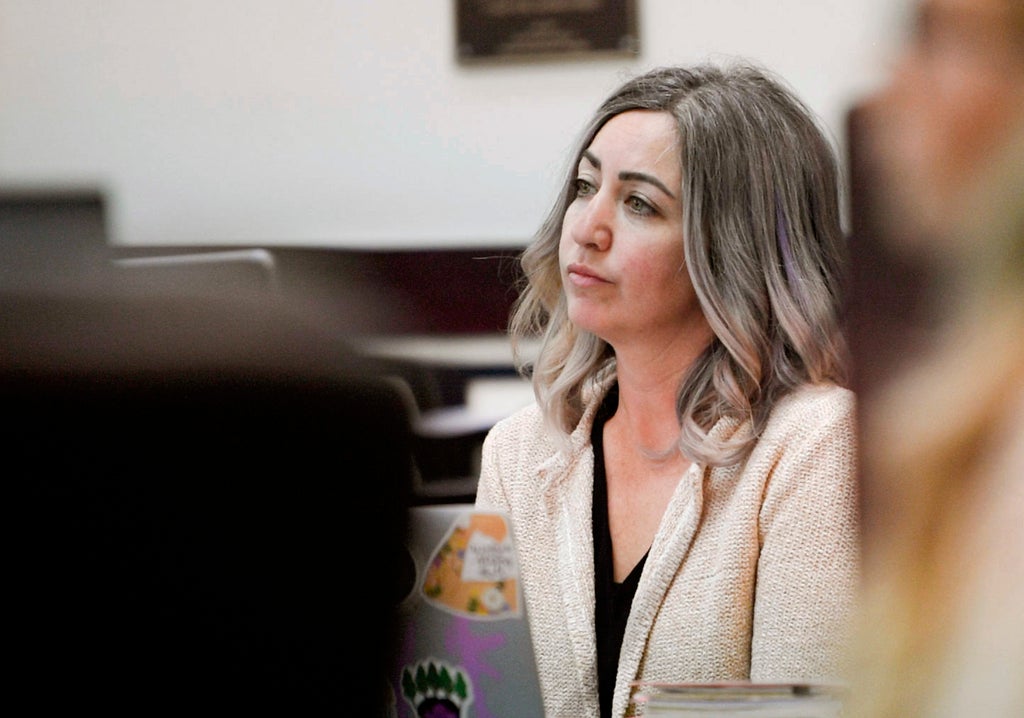
The attorney for a former Tennessee nurse on trial in the death of a patient accidentally injected with a paralyzing drug told jurors Tuesday the woman is being blamed for systemic problems at Vanderbilt University Medical Center.
RaDonda Vaught, 37, is facing a charge of reckless homicide for administering the drug vecuronium to 75-year-old Charlene Murphey instead of the sedative Versed on Dec. 26, 2017.
Murphey had been admitted to the hospital two days earlier after developing a headache and losing vision in one eye. On the 26th, doctors ordered a PET scan to check for cancer, but Murphey was claustrophobic and asked for medication to control her anxiety, according to testimony.
Vaught could not find Versed in an automatic drug dispensing cabinet because it was listed under the generic name midazolam. Instead she used an override mechanism to type in “VE” then grabbed vecuromium, according to court records. Vaught left the imaging area after injecting the drug, but minutes later another employee noticed Murphey was unresponsive.
The family removed the woman from life support in the early hours of Dec. 27.
Nashville Assistant District Attorney General Debbie Housel said during opening statements Tuesday that the nurse ignored warning labels on the medication and didn't notice the medication she chose was very different from the one needed.
“RaDonda Vaught recklessly ignored everything she learned in school” when she administered vecuronium, a drug sometimes used in executing prisoners, the prosecutor said.
“Vecuronium is only given when someone is intubated because it paralyzes the body,” Housel said. “A person can’t breathe, can’t move, can’t shout for help.”
In addition to the override, Vaught also failed to scan the medication against the patient’s medical identification bracelet, Housel said. She added that the drug she chose was a powder that had to be reconstituted, instead of a liquid.
Defense attorney Peter Strianse told the jury the hospital was at least partially to blame for Murphey's death.
He said that in 2017, problems with a new electronic records system led to delays in communication between the pharmacy and the hospital’s automatic drug dispensing cabinets. This often forced nurses to override the system, he said. There also was no scanner for the medication in the imaging area of the hospital where the accident happened.
Vaught admitted her error as soon as she realized it, and the state medical board initially took no action against her. The finger-pointing only began after the Centers for Medicare and Medicaid Services learned of the error and made a surprise inspection at Vanderbilt, according to Strianse.
“This was a high stakes game of musical chairs and blame seeking,” Strianse said. “When the music stopped, there was no chair for RaDonda Vaught.”
Testifying on Tuesday was Murphey's daughter-in-law Chandra Murphey, who cried as she recalled Charlene Murphy's last days.
The two had been preparing Christmas dinner on Dec. 24, 2017, when the older woman started complaining about her vision. Chandra Murphey convinced her to go to the emergency room, where they found a brain bleed. Murphey was transfered to Vanderbilt's intensive care unit but was getting better before the accident, Chandra Murphey testified.
She was at the hospital with her mother-in-law when she was taken downstairs for the PET scan and saw her again when she was brought back upstairs, surrounded by the doctors who were trying to save her life.
“How in the world do you take someone down for a PET scan and bring her back like this?” she asked. “They basically took her down fine and brought her back dead.”







